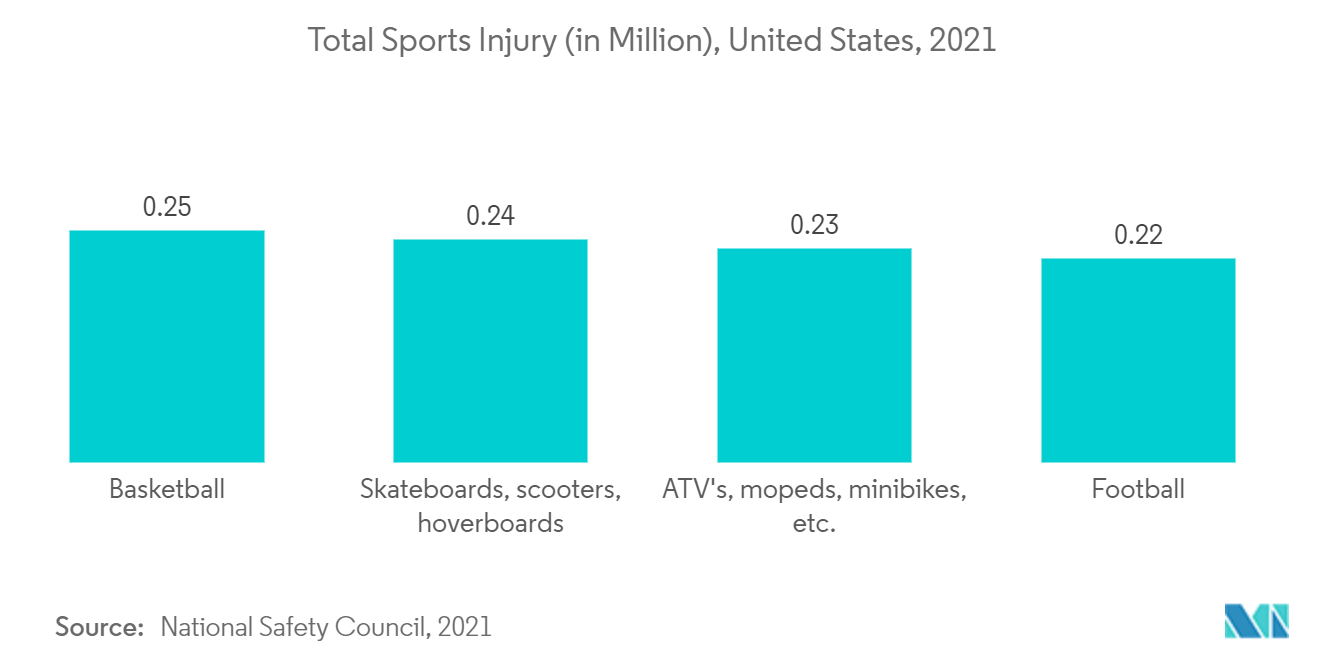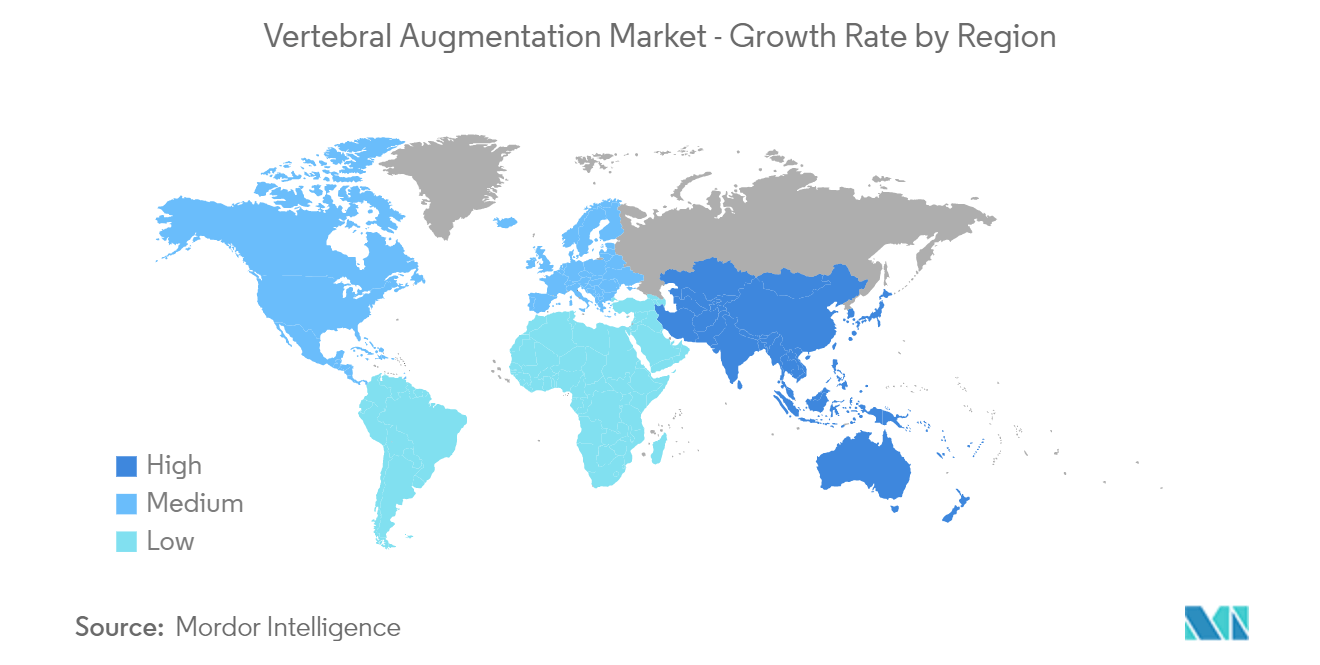Market Trends of Vertebral Augmentation Industry
Kyphoplasty Segment Expects to Register a Significant CAGR Over the Forecast Period
- The kyphoplasty involves injecting a special cement into the vertebrae as well as making space for the procedure with a balloon-like device (balloon vertebroplasty). Kyphoplasty can restore the height of a damaged vertebra and possibly alleviate pain. The kyphoplasty devices segment is expected to witness significant growth in the vertebral augmentation market over the forecast period owing to the factors such as the increasing incidences of osteoporosis among the population and growing cases of cancer-damaged vertebrae or certain spinal fractures.
- The kyphoplasty procedure is preferred for treating fractured vertebrae with minimal incisions due to several benefits over vertebroplasty procedures, including short-term pain relief, improvement of the short- and long-term kyphotic angle, lower cement leakage rate, improvement in mobility and quality of life, and for increasing vertebral body height as well as reduced kyphosis.
- For instance, according to an article published in Frontiers in Surgery Journal in July 2022, it has been observed that kyphoplasty is more frequently used for the clinical treatment of osteoporotic vertebral compression fractures, spinal metastatic tumors, hemangiomas, myelomas, and vertebral nonunion.
- In addition, kyphoplasty may be a safe and effective treatment for ankylosing spondylitis patients who have thoracic or lumbar fractures with the intravertebral vacuum phenomenon. This procedure relieves pain, improves function, restores the anterior and middle height, and corrects the kyphotic angle of the fractured vertebra.
- Similarly, as per an article published in Frontiers in Surgery in February 2022, it has been observed that both percutaneous kyphoplasty (PKP) with or without posterior pedicle screw fixation (PPSF) can maintain the spinal sagittal balance and produce excellent clinical results. In addition, PKP demonstrated more substantial advantages in the early postoperative period as compared to PPSF+KP. Thus, the above studies showed that kyphoplasty is effective in treating vertebral fractures in patients, which is anticipated to fuel the segment growth over the forecast period.
- Furthermore, the rising product launches are also contributing to the market growth. For instance, in October 2021, IZI Medical Products, LLC launched Vertefix HV Cement, a unique solution that addresses the need for real-time flow visualization during cement injection for kyphoplasty procedures. Therefore, owing to the factors mentioned above, the studied market is anticipated to grow over the forecast period.

North America Dominates the Market and Expected to do Same in the Forecast Period
- North America is anticipated to hold a significant share of the market over the forecast period due to the high demand for vertebral augmentation procedures owing to the high burden of osteoporosis and spine injuries. Also, the presence of robust healthcare infrastructure and the launch of new products in the area by the companies are further expected to have a significant impact on the market.
- According to the 2023 data published by the American Association of Neurological Surgeons, vertebral compression fractures (VCF) are the most common fracture in patients with osteoporosis, affecting about 750,000 people annually in the United States.
- In addition, an estimated 25% of all postmenopausal women are estimated to be affected by VCFs, annually in the United States, and the prevalence of VCF steadily rises with age, affecting 40% of women 80 and older. Also, according to the data published by the American Association of Neurological Surgeons in June 2021, it has been observed that more than 450,000 people in the United States were living with spinal cord injury (SCI) in 2021.
- Additionally, as per the 2022 statistics published by Osteoporosis Canada, about 2.3 million Canadians are living with osteoporosis, and 80% of all fractures in people aged 50 years and above are caused by osteoporosis. Furthermore, according to the 2022 statistics published by United Nations Population Fund, about 19% and 17% of the population was aged 65 years and above in 2022 in Canada and the United States, respectively. Thus, a high percentage of the geriatric population is likely to develop osteoporosis which in turn raises the risk of vertebral fractures. This is anticipated to fuel the demand for augmentation procedures, hence propelling the market growth.
- Moreover, the rising product approvals in the region increase the availability of technologically advanced novel products in the market, which is also expected to fuel market growth. For instance, in April 2021, Agnovos Healthcare LLC received FDA approval for an IDE clinical trial to assess its AGN1 local osteo-enhancement procedure (LOEP) small-volume (SV) kit in patients with vertebral compression fractures (VCFs).
- The device is intended to treat stable but painful VCFs through a minimally invasive procedure. Therefore, owing to the aforementioned factors, such as the high burden of vertebral fractures and osteoporosis among the population, increasing product launches, and the growing aging population, the studied market is anticipated to grow over the forecast period.

